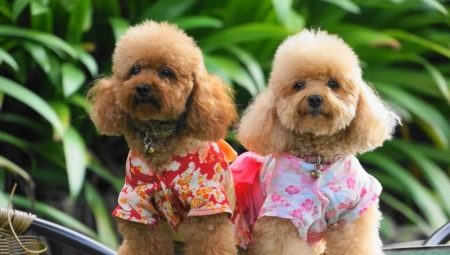The dwarf poodle for many years retains one of the leading positions among decorative breeds of dogs. These smart animals have a good character, demonstrate excellent training abilities, are suitable for keeping as companions for children and the elderly. The pros and cons of the breed often cause heated debate among breeders and just amateurs. Choosing a dwarf poodle, there is no doubt: this pet will definitely not let its owner get bored.

Origin history
A dwarf poodle is a breed bred on the basis of the classic royal variety of these dogs. The exact history of their origin is quite difficult to trace today. Among the alleged ancestors even divers are mentioned, as well as representatives of shepherd and hunting breeds. The first references to the prototypes of modern poodles are considered to be paintings of the 13th century. It was on the canvases of the masters of that time that one could meet dogs that looked very similar to their curly descendants.
Initially, in France the breed was called caniche, from cane - "duck", and was associated with the hunting use of these animals in the extraction of waterfowl. The love of water is also reflected in the name of dwarf poodles in other countries - here they are often called derivatives of the word "splash". And in Germany such dogs were called pudel-nass - literally "wet to the skin."
When breeding a dwarf variety, the emphasis was no longer on the working qualities of animals, but on their decorativeness and appearance.
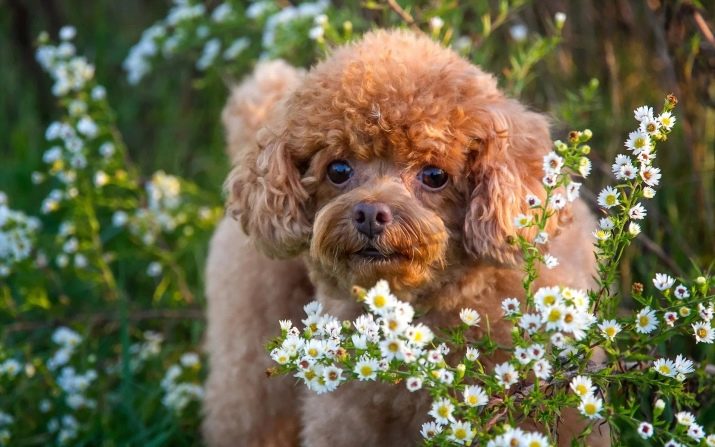
The prefix "royal" ancestor of dwarf poodles also received by chance. Dogs with an unusual appearance were accessible exclusively to nobles and royal people. The royal life lasted more than one century - commoners did not have the opportunity to get the same animals as the powers that be.
Mini-versions of poodles appeared only in the 19th century thanks to the efforts of a famous Swiss scientist named Shaitlin. Small dogs not only retained the main pedigree traits, but also remained proportionately folded. The miniature version of the dog was recognized, and with it the first officially recorded description in 1880. But the selection of the dwarf poodle continued until 1936. However, the very same, the first standard approved in France, is considered canonical even today, and breeders and judges at exhibitions rely on it when evaluating the external data of breeding animals.
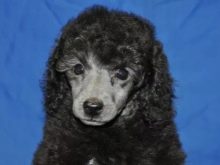
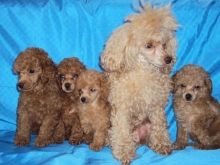
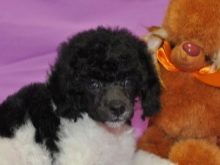
Breed description
The characteristics of the dwarf poodle breed make it possible to fully appreciate all its features. Even puppies already have pronounced signs that make it possible to determine their belonging to breeding animals. Dogs have a strong physique without unnecessary grace, are a miniature repetition of their standard counterpart, require similar care and attention.
The standard parameters inherent in the dwarf poodle are as follows.
- Body weight in the range of 4-6 kg. In this case, the animal must have a strong physique, which distinguishes it from the version with an elegant skeleton.
- The height at the withers is 28-35 cm for an adult animal with a fully formed skeleton.
- Head of regular shape, without distortion of proportions, occipital protuberance moderately pronounced. A characteristic feature is the presence of a groove longitudinally extending from the nape to the back of the nose, it can be felt even if this symptom is not visible visually.
- Muzzle without signs of apparent weakness or massiveness. The jaws are well developed, the coat gives them a U-shape. The correctness of the silhouette, according to the standard, is determined not by the silhouette of the jaw bones, but by the edges of the lips. They have a contrasting pigment (black) or the tone of the coat, pink spots are not considered marriage. The scissor bite is standard, the tooth enamel is snow-white, without yellow spots and chips.
- The nose with a medium sized lobe, the nostrils are widened, the color corresponds to the tone of the coat and lips.
- Eyes are not large, with a slight bevel of the inner corner. In the French version of the standard, the shade of the iris is indicated as almost black, but taking into account the variety of shades of the coat, an amber or dark brown color is allowed.
- The ears are soft, rather thick, on the sides of the upper part are adjacent to the head. The bottom edge of the ear should reach lip angles as standard, but lack of length is not considered a gross malformation. The measurement is not taking into account the length of the coat.
- The case is strong, slightly elongated, close in shape to a regular rectangle.
- The neck is oval, the withers are almost not expressed, the scruff is clearly defined, well developed.
- The croup is round in shape, the lumbar region is strong, the back is short, slightly narrowed to the femoral region.
- A clearly defined oval chest, wide, reaching the elbow joints. The belly emphasizes the grace of the silhouette, tightened. High tail, standard allows both natural length and tip stop. In motion, he should be carried high, without bends. In the breed standard, a defect is specified leading to culling - this is the complete absence of a tail, short tail.
- The limbs are straight, without distortion and curvature, the hind legs are muscular, the hock joint is springy.
When buying an animal for purebred breeding and participation in exhibitions, it is imperative to choose animals that are most consistent with the standard from parents with a pronounced phenotype inherited by the offspring.

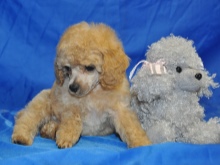
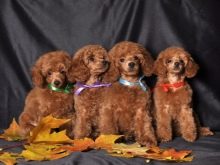
Character
Description of the nature of mini poodles allows you to get a more complete picture of this cheerful creation. Hardy dwarf dogs have a huge reserve of natural cheerfulness and almost never lose their presence of mind. Poodles of this type are great for participating in competitions - they have no equal in jumping disciplines, agility. But it is worth remembering that a lack of movement in combination with abundant nutrition quite quickly leads an active and previously moving pet to obesity.
High intelligence is a characteristic feature of this popular breed. Easily and quickly mastering even the most complex teams, dwarf poodles rightfully deserve the title of the most capable of learning. Moreover, the animals react rather sensitively even to a change in the mood of the owner and do not impose their society if it is not in the spirit.
If a family needs a pet that can adapt to the owner’s day regimen and share his interests, dwarf poodles will be an ideal choice.

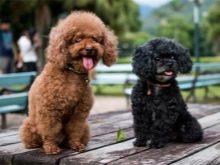
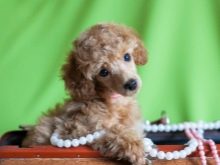
But such a dog is not a toy, but a full-fledged companion, always ready to support an active game. Dwarf poodles are suitable for school-age children and adults, but it is better not to choose such a dog for a baby. Aggression against a puppy can lead to his mental problems.
The presence of other pets in the house can lead to jealousy from the side of the dwarf poodle. These miniature dogs do not get along too well with their own kind, preferring the human society to them. A sense of danger makes the puppy and adult dog display anxiety and wariness against strangers. But with well-known people, dwarf poodles get along very well.
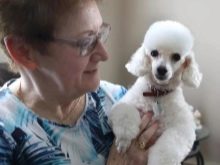

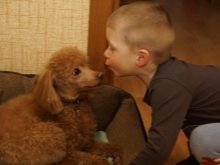
A sonorous voice and a willingness to demonstrate it to others for any reason is one of the features of the breed. Dogs bark from an excess of feelings and from fear, loudly express their discontent. For the owner, such sociability may be a problem, but no guest or casual visitor will be left without attention.
Do not forget about the hunting instincts - on a walk the dog is actively interested in the outside world and may well bring prey. In addition, the dog swims perfectly and loves to be in open water.
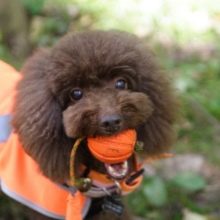
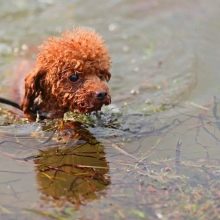
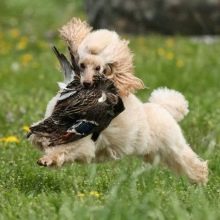
Advantages and disadvantages
Dwarf poodles, like representatives of other dog breeds, have their own advantages and disadvantages. The advantages of the breed traditionally include:
- the absence of the specific smell of the animal emanating from the hair;
- the possibility of being kept in a house where people with allergic reactions live;
- good trainability;
- high intelligence;
- the genetic absence of aggression, cowardice - individuals exhibiting these qualities are simply rejected.
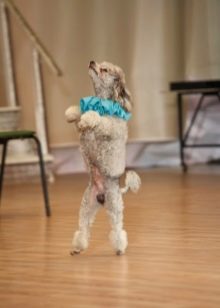
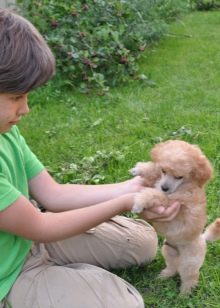
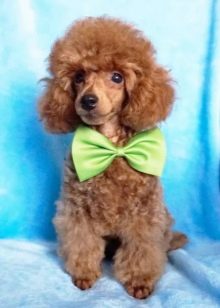
Not without cons. Dwarf poodles, as owners of plentiful hair, require great attention to personal care. Dogs require a groomer or haircut at home. In preparation for exhibitions, the costs of this increase significantly. Another important point is the frequent and loud barking, which is almost impossible to cope with. It is especially difficult to wean young dogs to bark - they are much more emotionally excitable than representatives of other breeds.
The sensitivity of animals is manifested in the perception of the environment. Dwarf poodles react quite negatively to a high level of noise, an unfavorable emotional background in a house or apartment. Aggression against an animal can also negatively affect its behavior.
Dogs of this breed are not recommended a change of owner, they are loyal, do not like change.

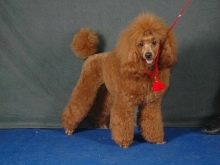
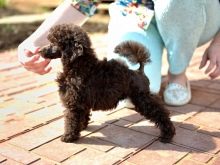
In addition, in the absence of proper attention to yourself, the pet may show signs of depression, be sad. This can also be attributed to disadvantages. For people who do not stay at home for a long time, it is better to consider another option for a pet.
Poor health, characteristic of most dwarf breeds, did not bypass the poodle. Dogs with improper feeding often suffer from diabetes, they have epilepsy, hearing impairment, and vision problems.
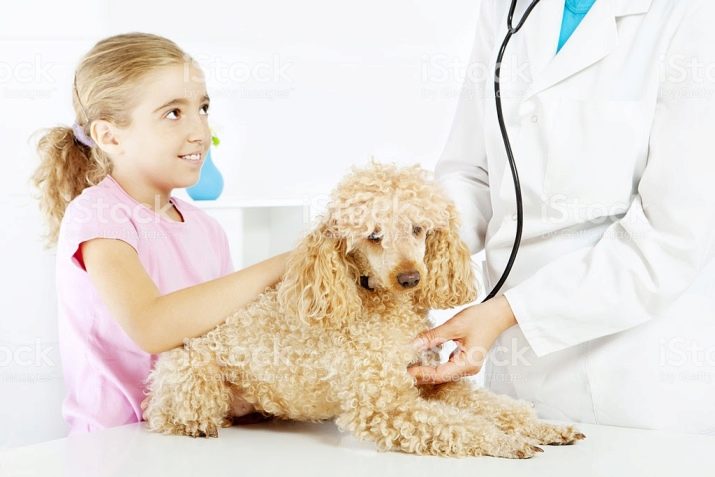
How many dogs live?
The record holder among his brethren is considered the dog Snuppy, who managed to celebrate his 20th anniversary. But usually the life span of an animal is somewhat shorter - about 12-15 years.
Heredity can affect the pet’s tendency to longevity - the absence of genetic diseases eliminates the possibility of premature death of the dog. For a dwarf poodle, such a moment as physical activity is also of great importance.
Reducing the volume of movement for a small dog is extremely dangerous, as the breed is prone to obesity.
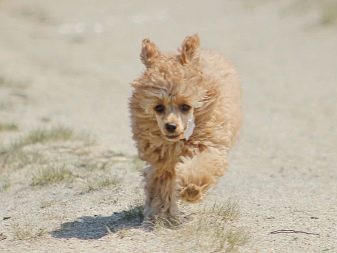
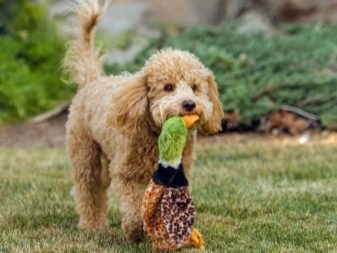
A growing number of owners of non-breeding animals agree on the advisability of castration or sterilization of pets. Such a cardinal decision is usually associated with high risks of cancer. To prevent their development on the reproductive organs, an operation is performed.
It is worth noting that a dwarf poodle is a rare example of a dog that is prone to longevity. Owners who pay enough attention to the health of the pet will feel great at 15-17 years old. There is a lack of tendency to early aging. Up to 10-12 years, the animal retains physical activity and does not lose shape.
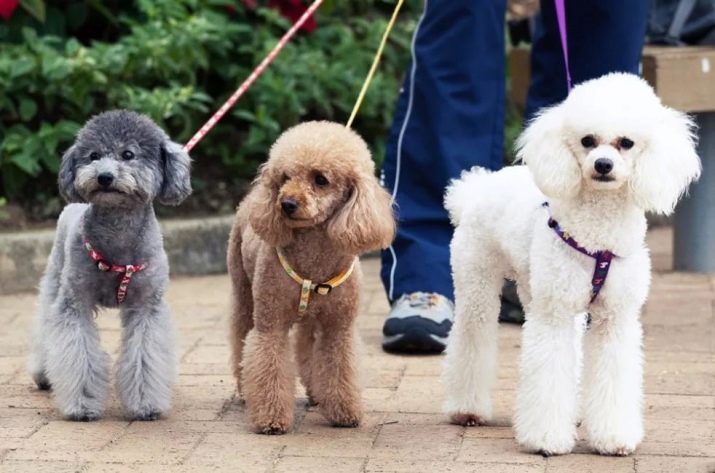
If the exact date of birth of the dwarf poodle is unknown, you can determine it approximately - according to the condition of the teeth. Young animals in 1-2 years have snow-white enamel, a pointed tooth shape with protrusions in the form of a trefoil. In a 4-year-old dog, the condition of the teeth changes - they acquire a grayish color, the protruding parts disappear, are smoothed out.
From the age of 5, the fangs begin to fade, and the enamel itself gradually turns yellow. The 8-year-old animal already has not too sharp teeth, traces of significant attrition are visible. During this period, intensive formation of tartar, plaque, requiring intensive attention of a veterinarian, occurs. By the age of 10, the dog’s teeth are completely yellow, sometimes they get a brown tint. After another 2 years, the dentition loosens, the bite changes.
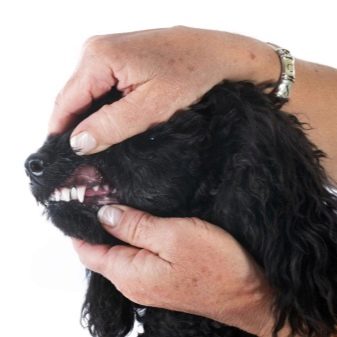
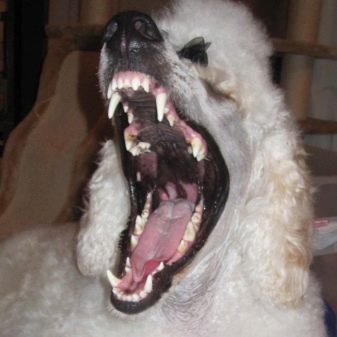
How old are they?
The size of the dwarf poodle largely depends on the age and gender of the pet. In young puppies, weight and height changes quite dynamically:
- a monthly puppy weighs about 10% of the body weight of an adult dog;
- from 2 to 4 months, weight gain is up to 100% of the previous value every month;
- A 3-month-old puppy should weigh about 2.5-2.9 kg and grow to 23.5 cm at the withers;
- in the period from 4 to 6 months, puppies go into the junior category, body weight reaches 3-4 kg with an increase of 27 cm;
- 7 months is an important milestone in the puppy’s life, at this age and up to a year he reaches maximum weight and height.
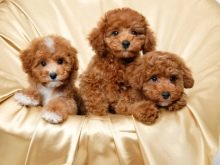
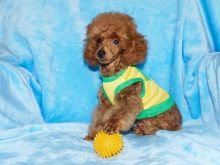
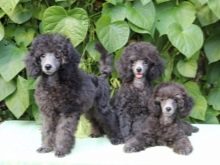
Up to 1.5 years a dwarf poodle is formed completely. At this point, the animal can grow another 2-3 cm, gaining the final parameters: about 6 kg in weight and 33-35 cm in the withers. Dogs stop growing rapidly when they reach the age of the first estrus and the moment of puberty. After that, the parameters of the dwarf poodle practically do not change.
Types of color
A dwarf poodle, like larger or smaller representatives of this breed group, can have a coat of one of two types. The first is curly, quite soft, with a pronounced curl, voluminous and fluffy. The second version of the coat is cord, in which the strands are collected in a kind of twisted cords with a length of at least 20 cm.The structure of the wool in this case is more dense, heavy, looks more impressive.
Regardless of the type of coat, it should not be coarse or stiff. The outer hair holds a haircut shape well.
An important feature of the coat of dwarf poodles is the lack of molting. In the process of leaving, combing has to be given a lot of attention.
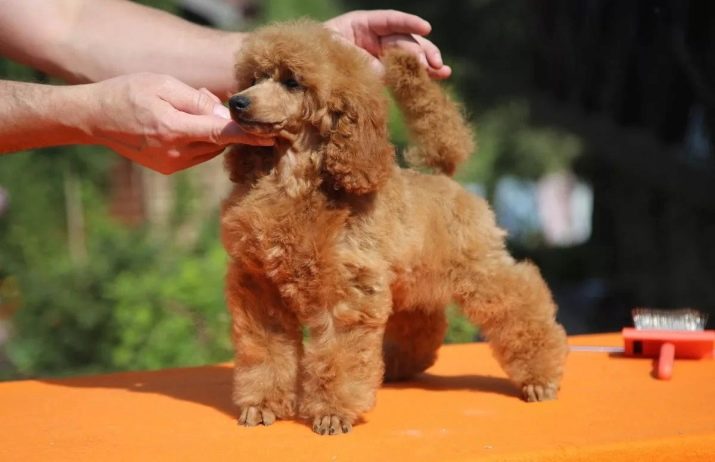
Among the colors stipulated by the standard, several are distinguished.
- The black. The classic version that occurs most often. It is characterized by a high quality of wool, this coloring does not provide for any lighter shades in certain areas of the wool, only deep anthracite. White areas of the outer hair should not be visible (with the exception of gray hair).
The skin of the dwarf poodle should have a gray or bluish tint, the eyes and pigmentation in open areas are dark brown.
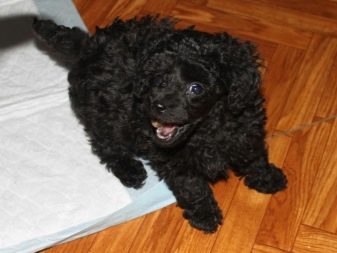

- White. In newborn puppies of this color, the presence of spots of an orange-pink or cream shade in the chest, legs, ears is allowed. As they mature, dogs become completely snow-white. The skin of white dwarf poodles has a pink or truffle color in the form of spotted splashes. Karimi remains eyes, fringes around them, nose, claws are always exceptionally black.
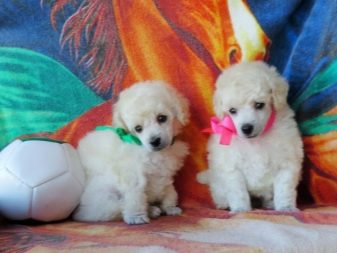
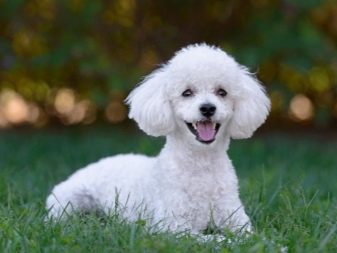
- Brown. This color is also called chocolate, it is characterized by the purity of the color scheme without interspersing light brown or beige. The color of the nose is dark hepatic, the eyes are amber or brown.
As the dog grows older, the color fades and loses its intensity.
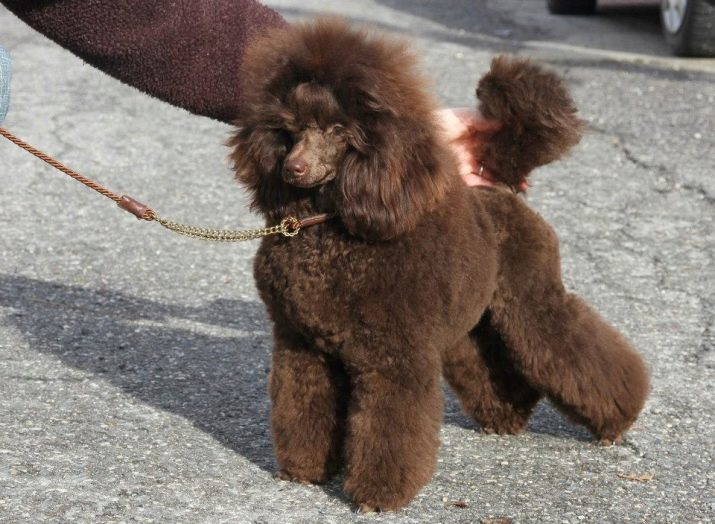
- Silver / gray. It should be clean, without a predominance of black or white. Silver or gray color can have many shades, it is completely formed upon reaching the age of three, the skin tone matches the color of the coat. Newborn puppies have a black tone, it begins to change by 6 weeks of age. The first signs of silver color appear on the face and paws, while the eyes are necessarily brown, and all pigmentation is black.
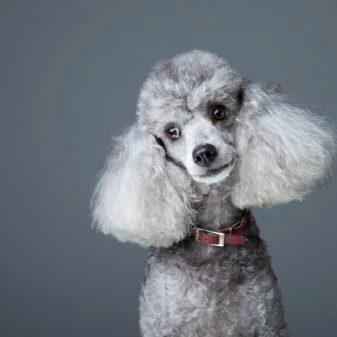
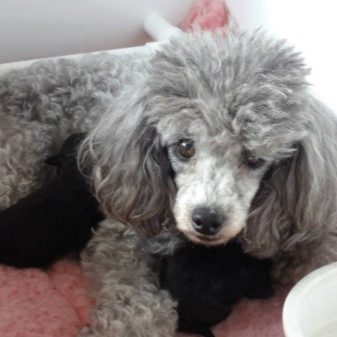
- Apricot. The shade of wool with this color can be more or less intense, but it should not turn into white or chocolate. The hair on the ears may be darker than the main body color. In the first two years, the animal has a more saturated tone, rather peach, but then it brightens and can even become creamy cream. Skin tone - pink, white, gray, gray-blue version is allowed, pigmented areas are black or brown, eyes are always only brown.
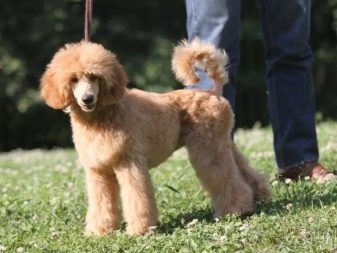

- Red / Red. The color of their wool has the characteristic color of mahogany or cast in copper. The red color, like all other bright shades of wool, loses its intensity over time. The skin is colored to the tone of the outer hair, the pigmented areas are dark brown, the nose is black or a shade of dark chocolate, the eyes are brown or light brown.
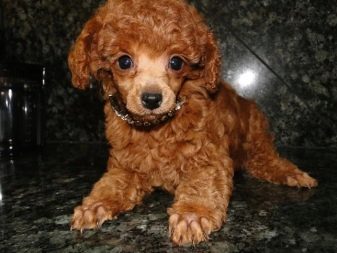
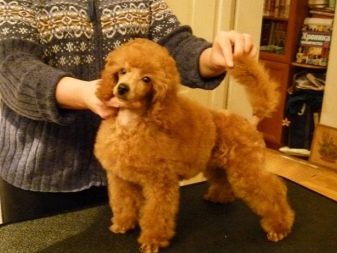
- Red brown. It combines the shades of two colors and looks very decorative.
But over time, the saturation of the tone of the coat changes and only professionals can determine whether a poodle belongs to a rare color.
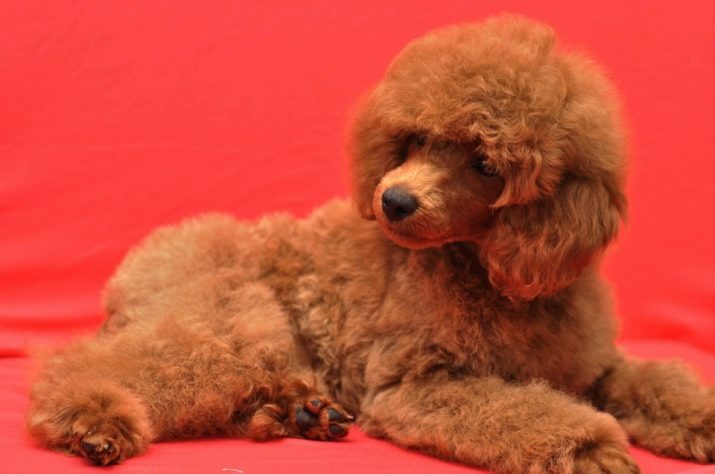
- Harlequin. This color is characterized by the presence of a white background, occupying about 60% of the body area, and a contrasting black “cap” on the head, as well as “blankets” on the back of the dog.
Harlequin dwarf poodles are most often obtained by mixing white animals with pigmented skin and black or gray producers with a spotting gene.
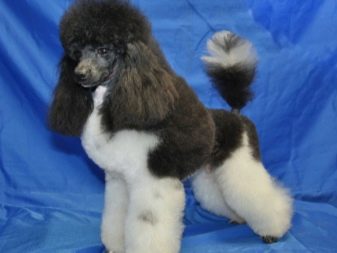
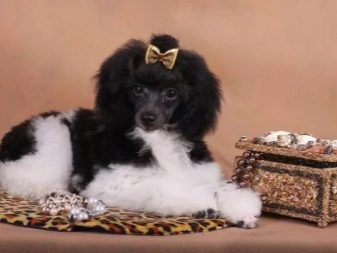
- A tan or black and tan, there is also a brown, red, gray main background. Dark hair occupies about 80% of the body, tan marks are localized on the chest, the edges of the ears, eyebrows, muzzle, in the anal region, on the surface of the paws.
Since 2007, harlequin, tan and red-brown colors are recognized by the RKF as official, but at the international level they are not welcomed everywhere.Among the “pioneers” of introducing new shades of wool are dog handlers and breeders from the Czech Republic, USA, and Germany. The cost of dogs of exotic color is always higher than classic.


So far, such promising colors of dwarf poodles as tiger, sable, silver-beige, splash or merle - spotted with pronounced speckles remain unrecognized by the standard.
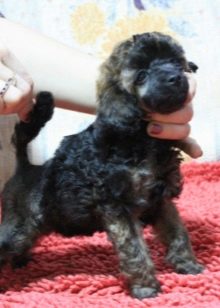
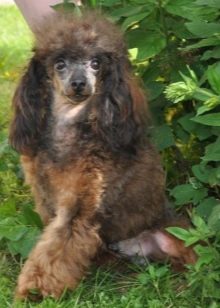
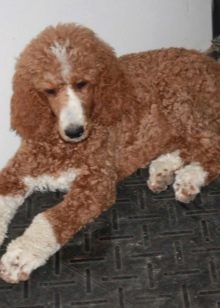
Content Features
Caring for a dwarf poodle does not require special skills, but implies the regularity of all procedures. In particular, while maintaining fluffy hair, the pet needs daily thorough combing. In the absence of timely care, the wool is knocked into tangles. Dogs of a non-show class must undergo a hygienic haircut on a regular basis, at least twice a year. They bathe the pet 6 times a year or as the coat becomes dirty.
The dwarf poodle, despite its decorative status, is a rather active dog that needs a splash of energy. Daily double walks in the morning and evening are obligatory for her. In addition, each year the pet is taken to the veterinarian to receive preventive vaccinations, as well as to clean the surface of enamel from tartar.


Daily routines should include examination of the eyes, teeth, ears of the animal. Experts also recommend paying attention to claw cutting - representatives of ornamental breeds often do not grind enough, therefore, they need additional trimming.
It is important to understand that the dwarf poodle is a dog exclusively for home keeping. It easily adapts to the space of a small apartment, and to the interior of a country house.
The dog has no developed undercoat; it cannot spend a long time outdoors in freezing temperatures. For the winter period, for short-cropped pets, it is recommended to purchase special overalls that provide additional heat, eliminate contact with moisture and dirt.
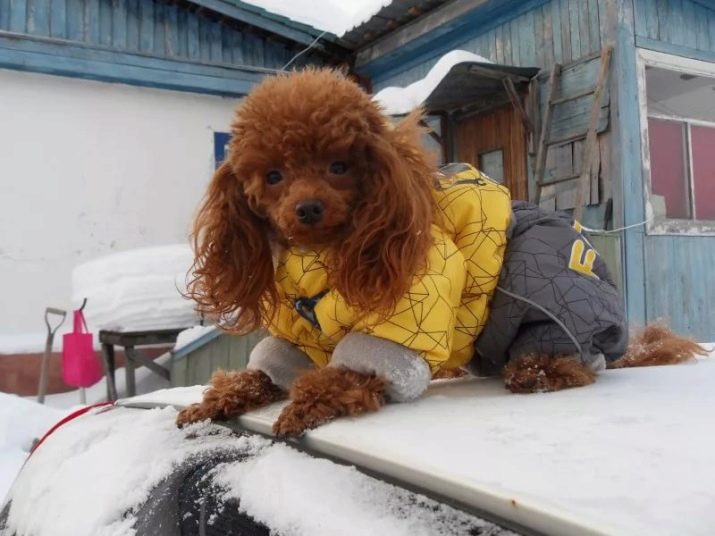
Owners of dwarf poodles have to pay great attention to creating a neat haircut on the pet's hair. For exhibits, only the following options are valid.
- English haircut. The dog retains only magnificent tows on its hind limbs. The rest of the coat is cut short.
- Under the lion. The loin and back of the body are cut short. The front of the body retains a lush mane. A fluffy brush also remains on the tail.
- Modern. With this type of haircut, the hair is cut shortly over the entire surface of the body; its length is preserved only on the head in the form of a “cap” and on the surface of the tail.
Care for the dwarf poodle's hair is carried out using a furminator or a special machine. For the show, a professional groomer makes a haircut.
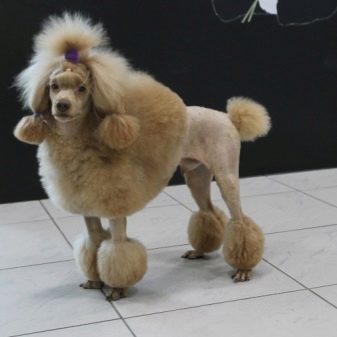

What to feed?
The standard diet of a dwarf poodle should include a full set of vitamins, minerals, nutrients. The optimal solution will be the selection of ready-made premium food for dogs of small breeds. If an animal is purchased in a nursery, it is highly likely that it will already be accustomed to a specific type of finished product. It is important to keep to the optimal menu to prevent obesity, which all pygmy poodles are prone to.
When feeding natural food, do not give the dog leftovers from the owner's table. For her, she will have to cook a special meal that includes the following ingredients:
- lean meats - chicken, beef (it can be offered raw), boneless turkey;
- low fat marine fish - in boiled form, only fillet, given twice a week;
- fresh and boiled vegetablesexcluding legumes;
- cereals - buckwheat porridge, rice cooked without salt, with a small addition of vegetable oil;
- fresh greens - nettle, dandelion leaves;
- fruits - dwarf poodles are happy to eat slices of bananas and apples;
- the eggs - up to 2 pieces per week, chicken, quail are suitable;
- dairy products - cottage cheese, yogurt, puppies can be given whole milk.
Regardless of the diet, a dwarf poodle should have round-the-clock access to clean fresh water, it is regularly changed.

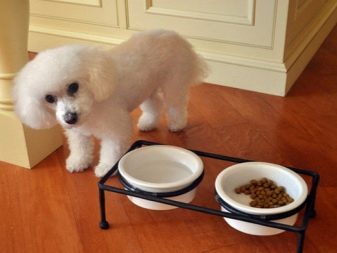
The choice of dishes should take into account the growth of the dog. It is better to choose options for bowls on special stands.
Owner reviews
The dwarf poodle is a breed that causes real delight in both adults and children. Owner reviews most often mention the extraordinary intellectual abilities of these small dogs. But during the walk, you need to prepare for the need to protect the pet from the excessive attention of others and large relatives.
The huge advantage of the dwarf poodle is called the absence of a period of molting, the smell of wool. Despite the rather magnificent coat, the dog is suitable even for allergy sufferers and allows you to keep furniture and other interior items clean. Attractive appearance and the ability to vary the appearance of the pet are also noted by the owners as important advantages of the breed.
In addition, dwarf poodles are incredibly photogenic - they can be used in photo shoots, advertising, always receiving rave reviews about the four-legged model.

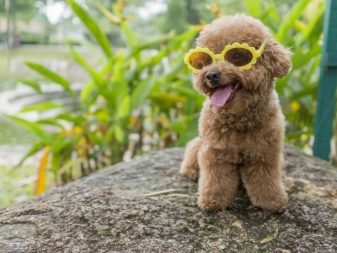
Often, male owners initially consider the breed too “feminine”, but after talking with the animal closer, they radically change their mind. The dwarf poodle is not just a favorite, but a real aristocrat, always ready to demonstrate courage and intellectual abilities. Thanks to the rapid assimilation of commands, the dog is suitable for children as a companion for walking or getting the first experience of self-training of animals.
About the features of the breed, see below.
